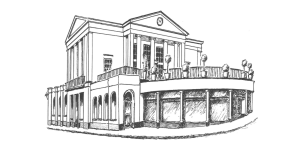Link to Department of Transport Survey: Night flight restrictions at Heathrow, Gatwick and Stansted
Night Flights Consultation
Department for Transport
Great Minster House
Horseferry Road
London SW1P 4DR
16 February 2017
NIGHT FLIGHTS CONSULTATION
I am writing on behalf of the Bishop’s Stortford Civic Federation in response to this consultation document about night flights. Our concerns are about Stansted Airport.
The Civic Federation has been established as a partnership between the Civic Society and the active residents’ associations in the town, which comprise some 6500 households, to speak up for their interests on major developments or other matters which affect the town as a whole. Each residents’ association appoints a representative serve on the Civic Federation committee and they have asked me to write this letter on their behalf. Bishop’s Stortford itself is the largest urban settlement close to the airport with a population of some 38500 at the last census, with further major housing developments at the time of writing just starting to the north of the town.
Our first comments relate to the environmental objective and proposed duration of the next regime (Questions 1 and 2).
These proposals essentially seek to maintain the status quo at Stansted for the next five years where the number of night flight movements permitted is twice that of Heathrow. In our view the aim of policy ought to be to reduce the adverse impact of night flights on the local population rather than simply leaving things as they are for the next five years. We have a number of detailed points to make under this heading.
- The way in which you measure noise disturbance is inherently flawed. The form which measurement appears to take is to average the disturbance over the whole of the night period and plot it as Leq contours. Using such an approach, the whole of Bishop’s Stortford appears to fall outside the contours you have plotted for Stansted Airport. Living on the Eastern side of town, I can assure you from personal experience that this part of town suffers considerable noise disturbance, particularly at night when background noise from other sources is very low. This is because in real life, people do not experience noise from aircraft as an average but as a succession of short bursts of very loud noise followed by silence until the next aircraft movement takes place.
- You have two definitions of night time – from 11.00 pm to 7.00 am and 11.30 pm to 6.00 am. In our view, the restriction on aircraft movements ought to apply to the longer period not the shorter one.
- Because of the aircraft rotation schedules of the low cost carriers which monopolise traffic at Stansted, the disturbance at the moment is particularly acute at the beginning and the end of the reduced night time period which currently applies. No doubt those carriers will argue that this is important for their business model. However, the bulk of the traffic is leisure travel by the more prosperous members of the community, and the main carrier, Ryanair, is a foreign owned airline. For purposes of analysing our balance of trade, foreign holidays count as imports. The tourist industry, like the country as a whole, suffers a chronic balance of trade deficit. So, even if a longer night time period would adversely affect the business model of low cost carriers, if it helped to rectify the chronic imbalance of trade, it might be in the wider interests of the country as a whole.
- The night time disturbance for local residents has actually got worse in recent years because progressively more of the quota on night flights has been used up. If the regime is to last for five years, then we would expect to see an improvement in conditions as a significant aim of policy.
Your question 3 proposes that currently exempt categories of aircraft should be included within the airport movements limits. We agree with this proposal. Even supposedly ‘quieter’ aircraft are inherently noisy machines and for residents of Bishop’s Stortford the only significant perceived distinction is between the even noisier 747’s and the rest. We recognise that the proposed refinement of QC categories might lead to a reduction in the use of really noisy aircraft (your question 9), but given the nature of night time disturbance we doubt whether it will make much difference in practice.
Your Question 6 relates to the proposal to raise the movement limit at Stansted to incorporate previously exempt movements within the total. As indicated in our answers to the first two questions, we think you should be aiming to reduce night time disturbance for residents, rather than simply maintaining the status quo for the next five years. It would go some way towards this objective, if you were to include the previously exempt movements within the existing limits rather than raise the limits to accommodate them.
The purpose of environmental limits is to encourage a change in the behaviour of those who are causing the environmental problem. All too often in the past in the case of Stansted, we have found that airlines’ and the airport’s first response is to seek to raise a limit when it looks as if it will soon reach the point at which it begins to bite. Conceding this every time makes the limits themselves redundant, and so we trust that on this occasion you will keep the movement limits at their current level, while incorporating previously exempt movements within them.
JOHN RHODES
PRESIDENT
